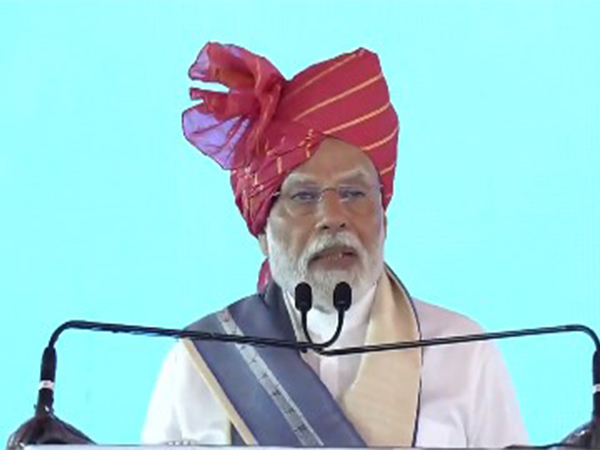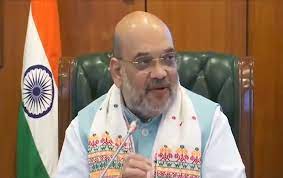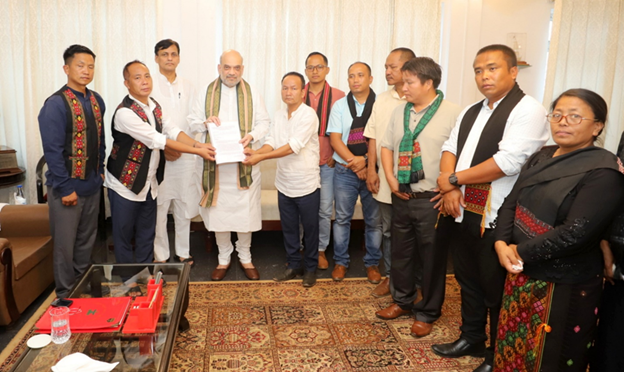Govt’s timely interventions, RBI’s measures helped maintain retail inflation at 5.4 pc: Economic Survey

The annual Economic Survey, tabled by Union Finance Minister Nirmala Sitharaman in Parliament on Monday, states that despite the pandemic and geopolitical tensions, timely policy interventions by the central government and the Reserve Bank of India’s price stability measures helped maintain retail inflation at 5.4 percent.
During FY22 and FY23, the COVID-19 pandemic, geopolitical tensions, and supply disruptions contributed to rising global inflationary pressures. In India, consumer goods and services faced price hikes due to international conflicts and adverse weather conditions impacting food costs, the survey said.
However, in FY24, timely policy interventions by the central government and the Reserve Bank of India’s price stability measures helped maintain retail inflation at 5.4 percent, the lowest level since the pandemic.
The global energy price index experienced a sharp decline in FY24. Additionally, the central government announced price cuts for LPG, petrol, and diesel. As a result, retail fuel inflation stayed low in FY24, the Survey said.
In August 2023, the price of domestic LPG cylinders was reduced by Rs 200 per cylinder across all markets in India, moving LPG inflation into the deflationary zone. Similarly, in March 2024, the central government lowered petrol and diesel prices by Rs 2 per litre, pushing retail inflation for these fuels into the deflationary zone.
India’s policy adeptly navigated challenges, ensuring price stability despite global uncertainties, with core inflation declining to a four-year low. The decrease in retail inflation in FY24 was driven by a fall in core inflation across both goods and services. Core services inflation eased to a nine-year low in FY24, while core goods inflation also declined to a four-year low.
In FY24, core consumer durables inflation declined due to an improved supply of key input materials to industries. This was a welcome change after the progressive increase in consumer durables inflation between FY20 and FY23.
The transmission of monetary policy to core inflation was clear. In response to rising inflationary pressure, the RBI gradually increased the repo rate by 250 basis points from May 2022. Consequently, core inflation declined by around four percentage points between April 2022 and June 2024, the Survey said.
Food prices have been under pressure due to adverse weather conditions. Food inflation has been a global concern over the past two years. In India, the agriculture sector faced challenges due to extreme weather events, depleted reservoirs, and crop damage, impacting farm output and food prices. Consequently, food inflation stood at 6.6 percent in FY23 and increased to 7.5 percent in FY24.
Unfavorable weather conditions in FY24 constrained food production. Tomato prices rose due to region-specific crop diseases, early monsoon rains, and logistical disruptions. Onion prices spiked due to rainfall during the last harvest season affecting rabi onion quality, delayed sowing of Kharif onion, prolonged dry spells impacting Kharif production, and trade-related measures by other countries.
However, the government took appropriate administrative actions, including dynamic stock management, open market operations, subsidized provision of essential food items, and trade policy measures, which helped mitigate food inflation, the Survey said.
The Economic Survey noted that in FY24, most states and Union Territories witnessed decreased inflation rates, with 29 out of 36 recording rates below 6 percent—consistent with the overall decline in all-India average retail inflation compared to FY23.
States with elevated food prices tend to experience higher rural inflation due to the greater weightage of food items in the rural consumption basket. Additionally, inter-state variation in inflation is more pronounced in rural areas than in urban areas, the Survey said.
Moreover, states experiencing higher overall inflation tend to have a wider rural-to-urban inflation gap, with rural inflation surpassing urban inflation, it added.
The Economic Survey said that the RBI projects inflation to fall to 4.5 percent in FY25 and 4.1 percent in FY26, assuming normal monsoon and no external or policy shocks. Similarly, the IMF forecasts inflation of 4.6 percent in 2024 and 4.2 percent in 2025 for India.
Furthermore, the World Bank predicts declining global commodity prices in 2024 and 2025, driven by lower energy, food, and fertilizer prices, which may help bring down domestic inflation in India, it said.
The Survey stated that achieving long-term price stability requires a clear forward-looking vision. Hence, assessing progress in developing modern storage and processing facilities for fruits and vegetables is crucial to manage seasonal price spikes.
According to the Survey, the medium to long-term inflation outlook will be shaped by the strengthening of price monitoring mechanisms and market intelligence as well as focused efforts to increase the domestic production of essential food items like pulses and edible oils, for which India has a high degree of import dependence.
.
(ANI)









